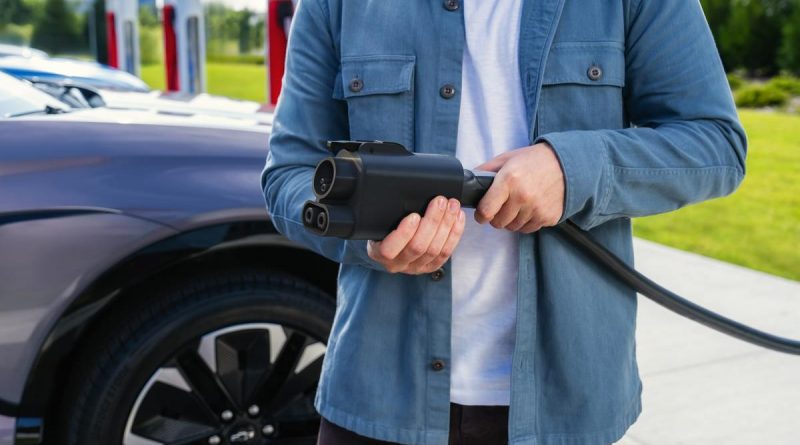Attention EV Owners: Get Ready for the Dongles!
Nearly a year ago, GM launched an adapter that allows existing electric vehicles to use North American Charging Standard plugs at Tesla Supercharger stations, providing significant advantages for EV drivers.
Recently, GM has introduced three new adapters that make it easier for customers to access EV charging stations with varying rates and standards. While this boosts convenience, it may also complicate things; a household with two electric vehicles could now need four different adapters.
A few years ago, most EV models in the U.S. adhered to the Combined Charging System (CCS) standard, with Tesla as a notable exception. In 2022, Tesla revealed its distinctive charging connector and port design, the North American Charging Standard (NACS), with the aim of encouraging its adoption by other manufacturers and network operators, setting it up as the forthcoming standard in North America.
This vision is now materializing. Today, almost all automotive manufacturers provide adapters for utilizing Tesla Supercharger stations and are planning to integrate the NACS design into their future models.
“GM is fully committed to converting our entire EV lineup to NACS,” said Tim Ash, director of hardware products for GM Energy, in a TechCrunch interview. “We believe that adopting this unified standard improves the customer experience.”
However, this transition has led to a somewhat chaotic situation, rife with various adapters.
Alongside the NACS-to-CCS adapter for quick charging, GM is set to introduce a NACS-to-J1772 adapter designed for Level 2 charging (with J1772 referring to the CCS plug used for slower charging rates). Upcoming GM electric vehicles featuring NACS ports will include both a J1772-to-NACS adapter for Level 2 charging and a CCS-to-NACS dongle for fast charging.
TechCrunch Event
San Francisco
|
October 27-29, 2025
These new adapters “ensure that EV drivers — regardless of their vehicle’s charging type — can access nearly any charger when needed,” Ash noted.
This challenge isn’t limited to GM. Hyundai, for example, is promoting the 2025 Ioniq 5 electric vehicles, equipped with NACS and providing two adapters: one for Level 2 charging and another for CCS fast charging. This illustrates how the evolution of EV charging standards can make public charging more complicated until a clear solution emerges.
Currently, most charging scenarios are relatively straightforward, as the majority of EV charging takes place at home or work, where chargers tend to be more standardized.
However, public charging can become convoluted quickly. Drivers are encouraged to keep adapters in their vehicles to avoid the risk of being stranded or inconvenienced. Those with incompatible chargers at home may consider investing in duplicates for ease, though most adapters typically cost over $200.
Automakers aren’t the only ones fueling the rising demand for adapters.
CCS and NACS share enough common ground that simple dongles can function across both charging speeds, but essential differences make simplification difficult. In NACS, electricity flows through two large pins, regardless of the charging speed, while CCS employs a distinct set of pins for Level 2 speeds and another for fast charging. Merging Level 2 and fast-charging capabilities into a single charger may necessitate advanced electronics, significantly increasing costs.
Conversations about new plug standards have been ongoing for quite some time. For example, Apple has released iPhones featuring three different connector types, even before it reached its 20th anniversary.
However, the pace of change in consumer electronics is considerably faster than in the automotive sector, with costs much lower. A typical smartphone user spends between $500 and $1,000, upgrading every two to three years. Dongles usually retail for around $30. The 30-pin dock cable for your old iPhone 4? That’s now obsolete.
In contrast, replacing an average car or light truck is not nearly as simple. New vehicle prices have soared to nearly $50,000, contributing to the fact that the average vehicle on U.S. roads is over 12 years old.
While automakers have begun this transition, an urgent rush to complete it seems absent. So far, GM has confirmed only two EV models adopting the NACS charging standard: the 2026 Cadillac Optiq and the 2027 Chevrolet Bolt. The company has yet to reveal a timeline for transitioning its remaining 12 EV models to the new standard.
In summary, brace yourself for an array of adapters. As Ash remarked, “this transition will take time.”
The post Attention EV Owners: Get Ready for the Arrival of Dongles! appeared first on Wired24.
The post Hey EV Owners: Brace Yourselves for the Dongles! appeared first on Tech Weekly.



